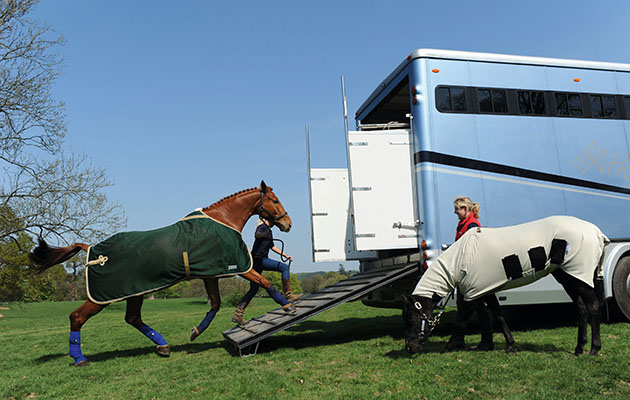An equine insurance policy provides financial support in a crisis, but it is important to understand what any such policy really involves and how cover works. Howard Newitt MRCVS, who advises insurers, explains what is fair and reasonable
Horse insurance can provide policyholders with reassurance and financial protection against mortality (death), theft, veterinary fees, loss of use and tack cover. But how sustainable is it, given ever-increasing costs of medical care?
As with any insurance policy, cover is provided by underwriters who assess the risk levels and set the premiums. The cover is then arranged by brokers who act as the intermediary between the policyholders and underwriters. Equine insurance is designed to provide cover for normal risks; in cases where an increased risk may be present, exclusions may be applied to reflect this.
Unfortunately, there are many misconceptions about equine insurance. Horse owners may debate whether or not insurance is a justifiable expense, sometimes citing examples where insurance claims were not paid. However, there are usually justifiable reasons for non-settlement of a claim. Most such claims are due to misunderstandings concerning the level of cover taken out in the first place – unfortunately, we are all guilty of not reading the small print until problems arise, even though we really should do so.
Horse insurance exclusions
One common area of misconception is when horse insurance exclusions are applied based on a pre-purchase veterinary certificate when the horse was considered suitable for purchase. For example, a small sarcoid is noted on the certificate, which in the opinion of the examining vet is unlikely to affect the horse’s performance as an eventer. However, from an insurance viewpoint, there is an increased likelihood of this horse needing veterinary treatment for the sarcoid and a horse insurance exclusion may be applied to represent this increased risk.
Equally, insurance will only cover problems that develop after the policy has been agreed. If, for example, the insured horse is reported to have flat feet with low heels on a pre-purchase vetting certificate, then insurers are extremely unlikely to agree to a claim for foot bruising and heel pain that develops as soon as the horse gallops on hard ground. Similarly, any pre-existing poor foot conformation and associated lameness will not be covered.
Loss of use and mortality cover
Another area of confusion is the massive difference between permanent loss of use and mortality cover. All risks mortality (ARM) cover features within most policies and will only pay out in cases where euthanasia is required because the horse is in severe pain and no treatment options are available: either an emergency situation such as a catastrophic fracture; or a non-emergency situation but one in which the horse is showing severe and unremitting pain, and retirement on a safe dose of medication is not possible.
It will not cover the loss of a horse after prolonged treatment such as arthritis or other situations, in which the horse is no longer rideable but can be retired. Instead there is loss of use (LOU) cover available for this eventuality at a higher premium cost.
For a claim to be considered under an ARM policy, the horse must be judged to meet the British Equine Veterinary Association (BEVA) criteria for mortality insurance. This would usually involve a report from the attending vet and commonly a discussion between the insurer’s vet and the attending vet.
For this reason, it is important that insurers are given adequate notice of a planned euthanasia, although it is understood that emergencies can sadly happen. A post-mortem examination is usually required as part of a mortality claim.
Mortality insurance is cover that most horse owners will hope to never use, but it is worth being aware of the limitations of such cover at what is already a distressing time.
Why multiple conditions may be covered by one claim
The detection of multiple veterinary conditions while investigating a problem is a further situation that can lead to misunderstandings regarding insurance cover. One such case might be that of a showjumper who had started to refuse at fences. Veterinary investigations revealed equine gastric ulceration syndrome, hock arthritis and back pain. From an insurance viewpoint, these three conditions would be considered as one claimable incident, as all three were detected as part of the investigation into failure to jump.
The relevance of this is that the policy’s veterinary fees limit is available to treat all the conditions detected; it is not the case that the limit is applied three times, once to each veterinary condition.
Limits for veterinary fee cover vary from policy to policy, and some of the lower limits may not cover all of the costs of the more expensive procedures. For example, policies are available with £3,000 of veterinary fees cover, but the costs of a surgical colic or extensive lameness investigation may greatly exceed that figure. Even cover up to £5,000 is often insufficient.
The effect of fraud
As with all forms of insurance, fraud can occur with vet cover. Equine insurance fraud can range from submitting extra items on a claim (such as an extra box of bute on a lameness claim) through to incorrectly declaring the date of onset of a condition, or failing to declare prior treatment history. This might be using several different veterinary practices but submitting the history from only one practice (owners are now required to sign a declaration that they have submitted all of the horse’s treatment history to prevent this). Simply asking a vet not to mention conditions on a vetting certificate constitutes an attempt at insurance fraud.
To someone prepared to commit fraud, it may feel that there’s no downsides as “it’s just a company”, but aside from the obvious risk of personal legal and financial problems if the fraud is uncovered, the loss to insurance firms means higher premiums and less generous cover in the future, so it is far from being without consequence.
Insurers are not a bottomless pit to refund horse owners, so therefore it is vital horse owners use insurance properly – or the option to have insurance may be lost completely.
Why insurance matters from a vet’s perspective
From a veterinary viewpoint, it is undoubtedly the case that veterinary fees insurance has allowed the development and provision of a high standard of veterinary care to the UK’s horses. This will have helped horse owners who may not otherwise have been able to afford treatment for their animals, and so has obvious benefits for equine welfare.
The flip side to this is that the improvement and development of veterinary treatments leads to more expensive claims, and certainly to claims inflation, which has resulted in veterinary fees insurance being a loss-maker for underwriters in recent years. Although perhaps not everyone feels sympathy for insurance companies, it is not sustainable for insurers to continue to make a financial loss. As a result, either premiums will rise, or fewer companies may offer veterinary fees insurance.
Having experienced equine insurance as a horse owner, vet in practice and insurance company advisor, I am convinced of the many mutual benefits of such insurance, and look forward to horse owners, vets and insurers working together to ensure that equine insurance continues to provide significant benefits for the horses of Britain.
- To stay up to date with all the breaking news from major shows throughout 2025, subscribe to the Horse & Hound website
You may also be interested in:

What is loss of use insurance for horses and how does it work?

Personal accident insurance for riders: what it is and why you might need it

Rider hit with £5,500 bill reminds others to check insurance small print

How The Insurance Emporium’s pick and mix cover can help owners | A Horse & Hound Podcast promotional feature

Subscribe to Horse & Hound magazine today – and enjoy unlimited website access all year round




